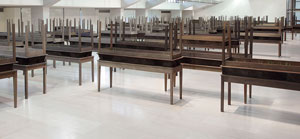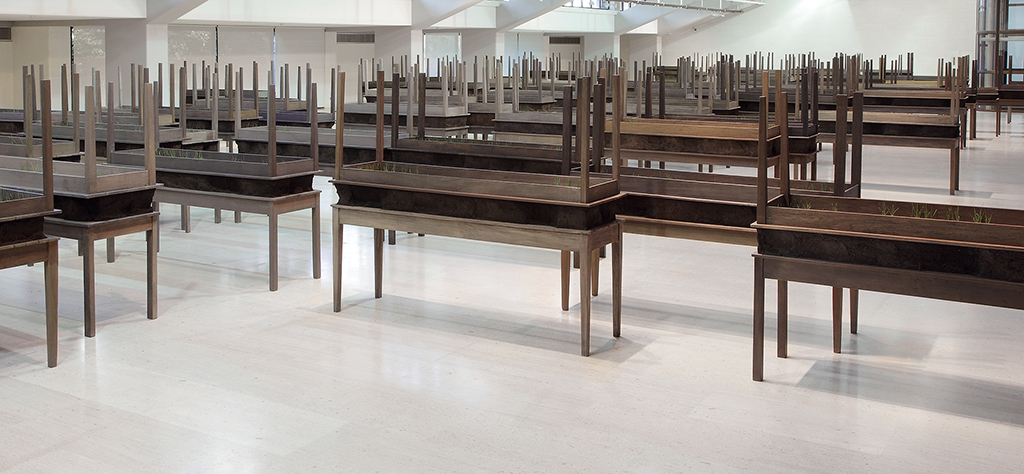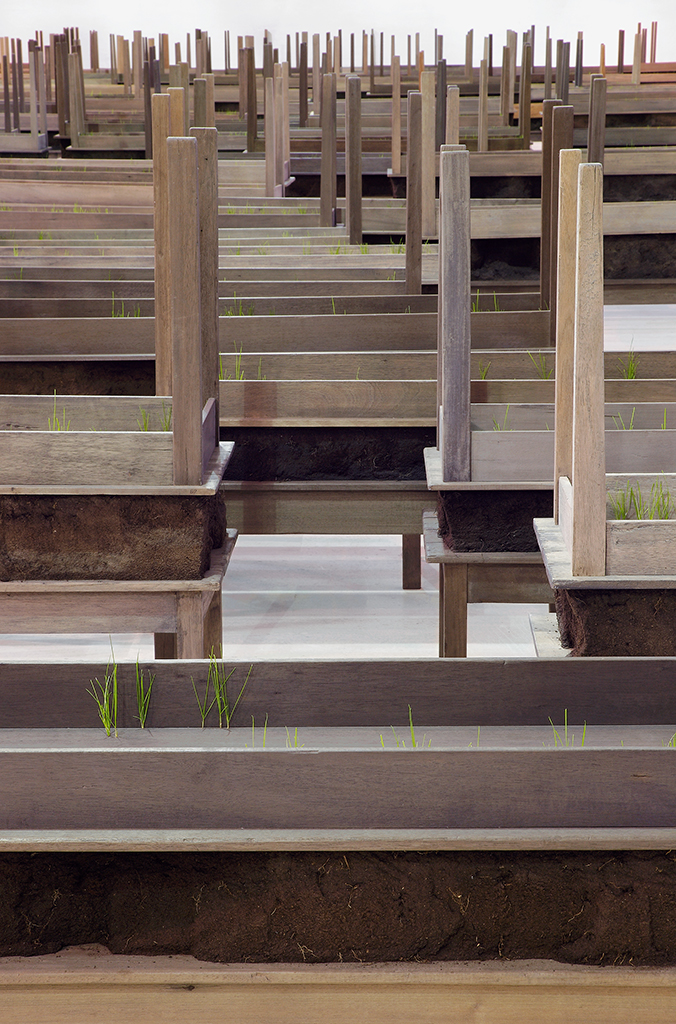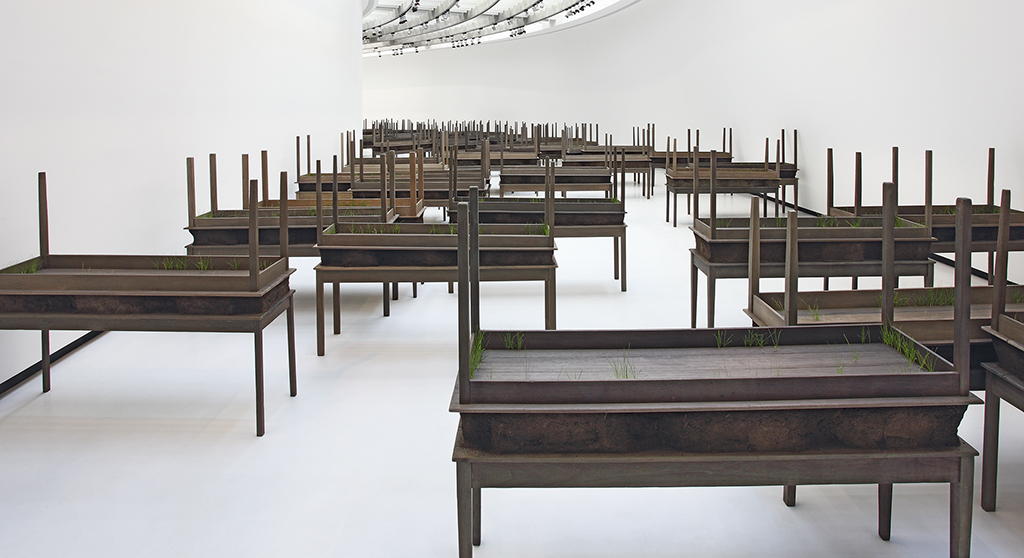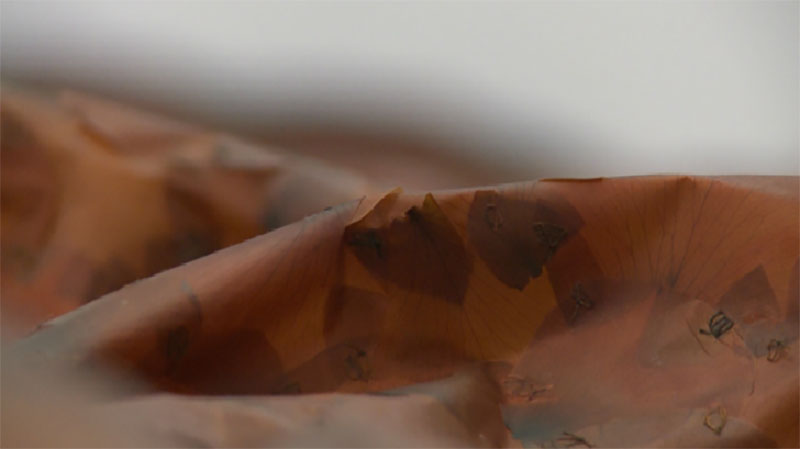Plegaria Muda
Plegaria Muda, which translates loosely to “silent prayer,” began with Salcedo’s research into gang violence in Los Angeles. The artist noted how victims and perpetrators of gang violence often share socioeconomic circumstances that lead to conditions of increased violence. They are often viewed as lesser in the eyes of broader society, resulting in a lack of empathy for the loss of their individual lives. The work was also made in response to Salcedo’s experience of mass graves that she visited with grieving mothers in Colombia, who were searching for their missing sons.
Each sculpture is composed of two hand-crafted tables, which approximate the size and shape of a human coffin. One table is inverted upon the other, with live grass growing from an earthlike layer in between. The installation counters the anonymity of victims in mass graves with hand-wrought, unique works, and asserts the importance of each individual’s proper burial—whether in the United States, Colombia, or elsewhere. For Salcedo, the individual blades of grass evoke a sense of optimism: “I hope that, in spite of everything, life might prevail, even in difficult conditions . . . as it does in Plegaria Muda.”
